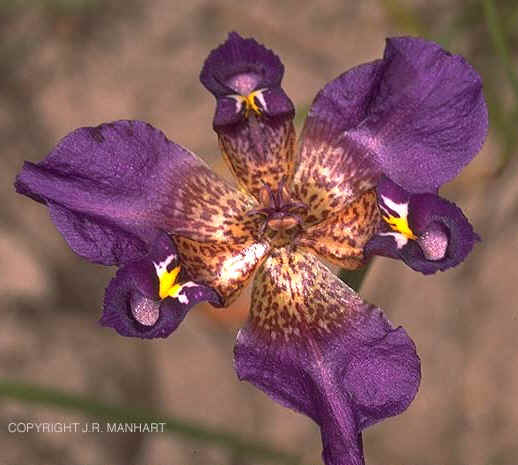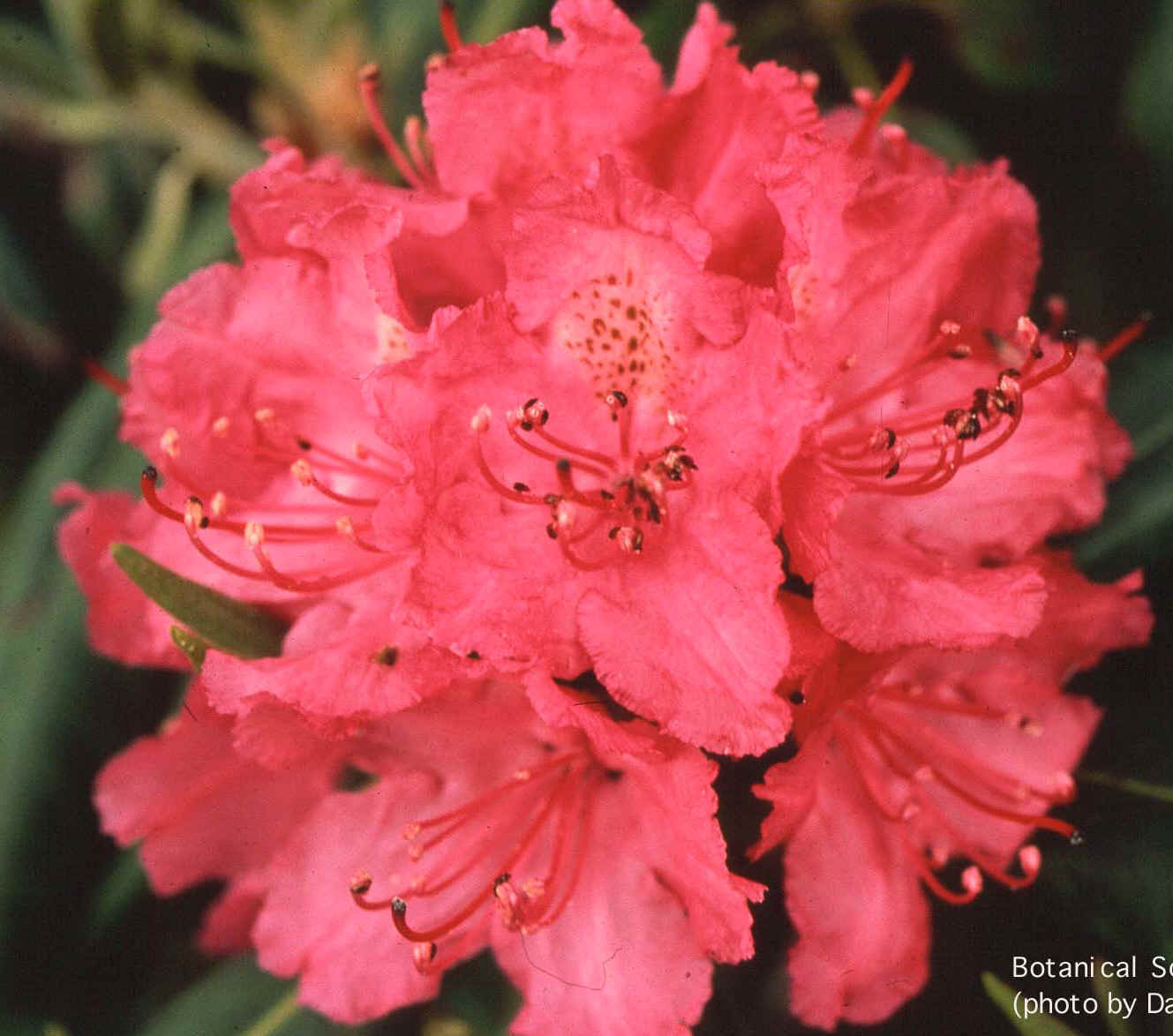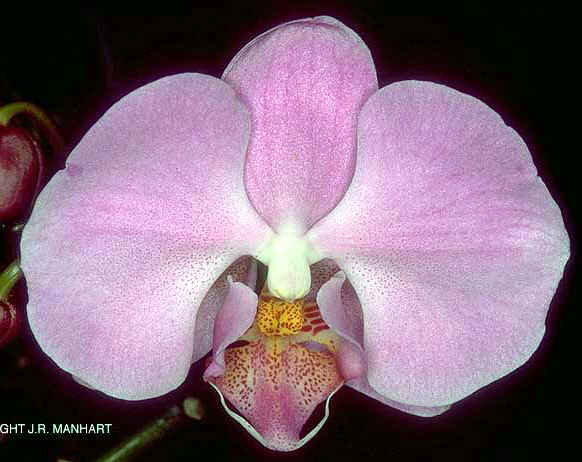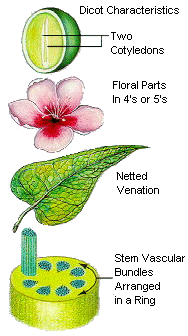| Vascular Plant Morphology | |
| Introduction:
Angiosperms:
|
  
Gymnosperms:
Angiosperms:
|
| Vascular Plant Morphology | |
| Introduction:
Angiosperms:
|
  
Gymnosperms:
Angiosperms:
|

|
Dicots:
Dicots can be herbaceous or woody plants. The vascular bundles in their stems are arranged in in a ring around a small pith. The vascular cambium produces secondary xylem toward the interior of the stem, and secondary phloem toward the outside of the stem. Dicot leaves display a netted reticulate venation pattern that can be either palmate or pinnate. The dicot flower parts will be in multiples of four or five. The embryo will have two cotyledons. Some examples of dicots are: magnolias, oaks, beeches, willows, maples, asters, zinnias, marigolds, cacti, jade plant , tomatoes and potatoes, poison ivy, cotton, blueberries, and rhododendrons Monocots:
|